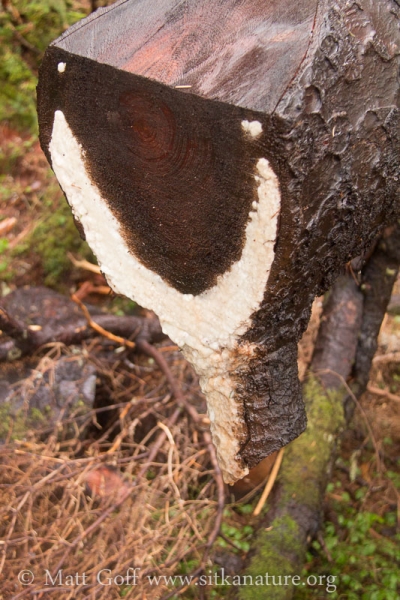When trees fall across maintained trails, it doesn’t usually take long for someone to come along and cut through them to clear the trail. I think I started noticing the stuff accumulating at the downhill ends of these maybe 20 years ago. (I hadn’t thought about it in a long time, but I think my earliest memories of noticing this were from along Indian River trail not far from the falls – and those were probably trips I made in the early or mid-90s.) My first thoughts (back then) were that it was sap leftover from the tree, that was just running out. I think (trying to dredge up pretty old memories here), that I might have started to have my doubts at some point because it didn’t really smell like sap, but I didn’t really give it too much thought.
At some point in more recent years, I learned about biofilms and decided that is probably what I was seeing on these logs. However, I’m still not entirely sure.
The picture above shows a striking distribution of the obvious biofilm. It seems fairly limited to the outer part of the log. I think maybe this part of the log (when it was still a tree) was the sap would have been moving up and down. Perhaps the structure through which that movement occurred is still intact enough to facilitate the flow of water, which in turn carries nutrients that feed the organisms in the biofilm. In contrast, maybe the heartwood does not so easily allow water to move through, and so there is not such an obvious growth of material there.
Several questions come to mind related to this (assuming it is a biofilm):
- If this is a biofilm accumulation, does it differ dramatically from tree to tree? How about from species (of tree) to species?
- How long does it take to get going, and how long will it persist?
- Does it form (in a less obvious way) on broken logs (that don’t have the relatively smooth end?
- What sort of organisms make up the biofilm?
- Is the distribution of growth related to where sap moved through the tree?
- What is coming out of the tree that is feeding this film?

